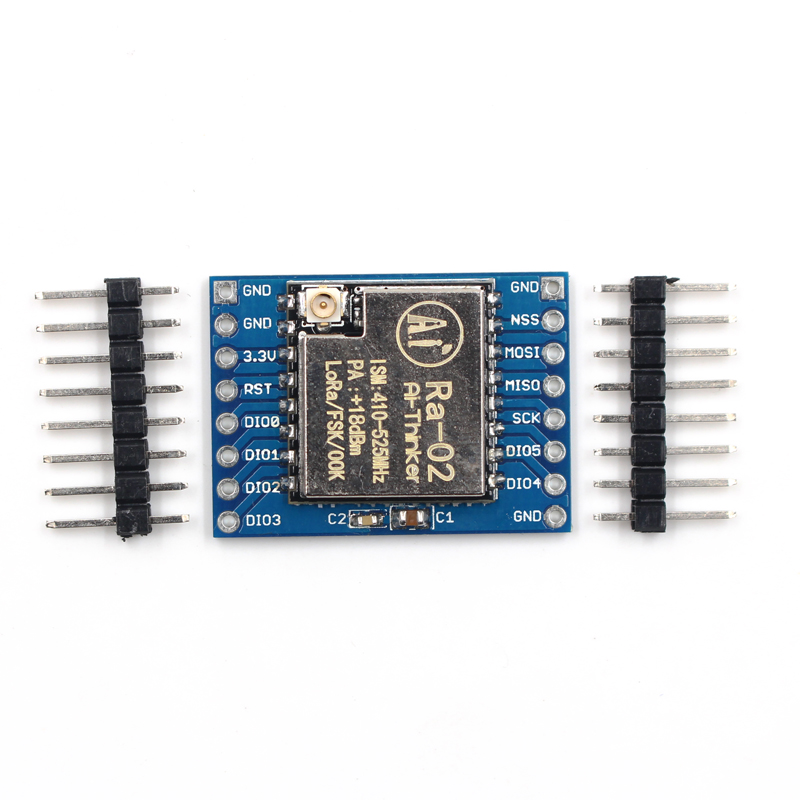Rasbperry Pi PI Pico powered Rocket Flight Computer. Powered by 3.7V LiPo Battery with on board BMS support and tons of features.
- RO2040 Core Microcontroller
- 3.7V LiPo Powered
- On Board battery charging and management system
- GPS NEO6m Module
- LoRa SX1278 Ra-02 Ai thinker
- Barometer BMP280
- Accelerometer and Gyro MPU6050
- SD Card module for data logging
- GPIO header for external peripherals
- Easy to solder Modules compatibility
- Charging Indicator LED
- Freedom Of use (You can skip unwanted Features. Simply not to add that module to the system)
Raspberry Pi Pico is a low-cost, high-performance microcontroller board with flexible digital interfaces. Key features include: RP2040 microcontroller chip designed by Raspberry Pi. https://www.raspberrypi.com/documentation/microcontrollers/raspberry-pi-pico.html
The Lithium Polymer Li(NiCoMn)O2 Battery is a type of rechargeable battery based on the original lithium ion chemistry, created by the use of nickel(Ni), cobalt(Co), manganese(Mn),as a cathode material. LiPo cells have a flexible, foil-type (polymer laminate) case, so they are relatively unconstrained. Withing reduced electrolyte,further enhancig battery safety and being able to be positioned in any direction. Already passed all of the safety tests(overcharge, overdischarge, over temperature, short circuit, drop, Crush, Needle puncture tests, etc). These battery cells do not catch fire, no explosion and no leakage.
The u-blox NEO-6M global positioning system (GPS) module, a very popular, cost-effective, high-performance GPS module with a ceramic patch antenna, an on-board memory chip, and a backup battery that can be conveniently integrated with a broad range of microcontrollers.
Anxinke LoRa series modules (Ra-01/Ra-02) are designed and developed by Anxinke Technology. The radio frequency chip of this series of modules SX1278 mainly uses LoRa™ remote modem for ultra-long-distance spread spectrum communication. It has strong anti-interference and can Minimize current consumption. With the help of SEMTECH's LoRa™ patented modulation technology, SX1278 has a high sensitivity of over -148dBm, a power output of +20dBm, a long transmission distance and high reliability. At the same time, compared with traditional modulation technology, LoRa™ modulation technology also has obvious advantages in anti-blocking and selection, which solves the problem of distance, anti-interference and power consumption that traditional design solutions cannot simultaneously take into account. https://docs.ai-thinker.com/en/lora/man
The BMP280 consists of a Piezo-resistive pressure sensing element and a mixed-signal ASIC. The ASIC performs A/D conversions and provides the conversion results and sensor specific compensation data through a digital interface. BMP280 provides highest flexibility to the designer and can be adapted to the requirements regarding accuracy, measurement time and power consumption by selecting from a high number of possible combinations of the sensor settings. https://cdn-shop.adafruit.com/datasheets/BST-BMP280-DS001-11.pdf
The MPU-6050 is the world’s first integrated 6-axis MotionTracking device that combines a 3-axis gyroscope, 3-axis accelerometer, and a Digital Motion Processor™ (DMP) all in a small 4x4x0.9mm package. With its dedicated I2C sensor bus, it directly accepts inputs from an external 3-axis compass to provide a complete 9-axis MotionFusion™ output. The MPU-60X0 MotionTracking device, with its 6-axis integration, on-board MotionFusion™, and run-time calibration firmware, enables manufacturers to eliminate the costly and complex selection, qualification, and system level integration of discrete devices, guaranteeing optimal motion performance for consumers. The MPU-60X0 is also designed to interface with multiple non�inertial digital sensors, such as pressure sensors, on its auxiliary I 2C port.
https://invensense.tdk.com/wp-content/uploads/2015/02/MPU-6000-Datasheet1.pdf
This small SD card slot breakout board allows you to add high capacity storage to almost any microcontroller project. It can be used with most of the microcontrollers (ARM, PIC, AVR, Arduino).
Break out board for standard SD card and Micro SD (TF) card Contains a switch to select the flash card slot
https://www.optimusdigital.ro/en/memories/1516-microsd-card-slot-module.html
- 90mm x 90mm
- 2mm 4x screw mounts
- Signal Layers:2
- None Signal Layers:10
- Components:22
- Pads:135
- Surface Pads:81
- Plated Through-hole Pads:54
- None Plated Through-hole Pads:0
- Holes:9
- Vias:10
- Nets:41/41
- Length of Tracks:1777.21mm
- Copper Areas:2
- Use a QC qualified 3.7-4.2V LiPo battery
- Battery Capacity is 1Ah-5Ah
- Charging current for LiPo is 500mA
.
├── EasyEDA_Source_files
│ ├── PCB_Pico Breakout_2021-05-24.json
│ └── Pico Breakout_2021-05-24.json
├── images
│ ├── Screenshot 2022-02-26 103039.png
│ ├── Screenshot 2022-02-26 103118.png
│ ├── Screenshot 2022-02-26 103131.png
│ ├── Screenshot 2022-02-26 103152.png
│ ├── Screenshot 2022-02-26 103259.png
│ ├── Screenshot 2022-02-26 103315.png
│ ├── Screenshot 2022-02-26 103335.png
│ └── Screenshot 2022-02-26 103406.png
├── manufacturing_files
│ ├── BOM_Pico Breakout_2021-05-24.csv
│ ├── Gerber_PCB_Pico Breakout.zip
│ └── PickAndPlace_PCB_Pico Breakout_2021-05-24.csv
├── MCAD Files
│ ├── OBJ_PCB_Pico Breakout_2021-05-24.zip
│ └── PCB_Pico Breakout_2021-05-24.dxf
└── README.md
5 directories, 16 files










